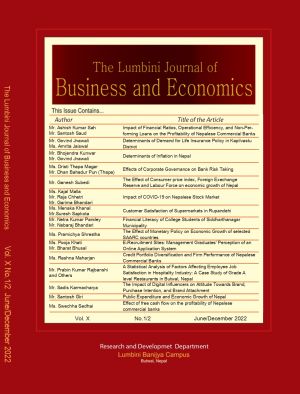The Effect of Consumer price index, Foreign Exchange Reserve and Labour Force on economic growth of Nepal
DOI:
https://doi.org/10.3126/ljbe.v10i1-2.54205Keywords:
Johansen Cointegration test, Vector Error Correction Model, GDPAbstract
One of the main objectives for any country is to attain higher economic growth. Even though there are many factors that affect the economic growth of the country, this paper tries to examine the casual associations between the major economic indicator (GDP) with other factors such as consumer price index (CPI), foreign exechange reserve (FOREX), Labour force, so as to confirm the short run and long run relationship between GDP and these factors. This study uses the data from 1990 to 2021. Johansen approach to cointegration and vector error correction model has been implemented and the result have confirmed that a percentage increase in consumer price index will decrease GDP by 0.98 percentage, a percentage increase in foreign exechange reserve increase GDP by 0.017 percentage, where as a percentage increase in labour force will decrease GDP by 0.25 percentage.




